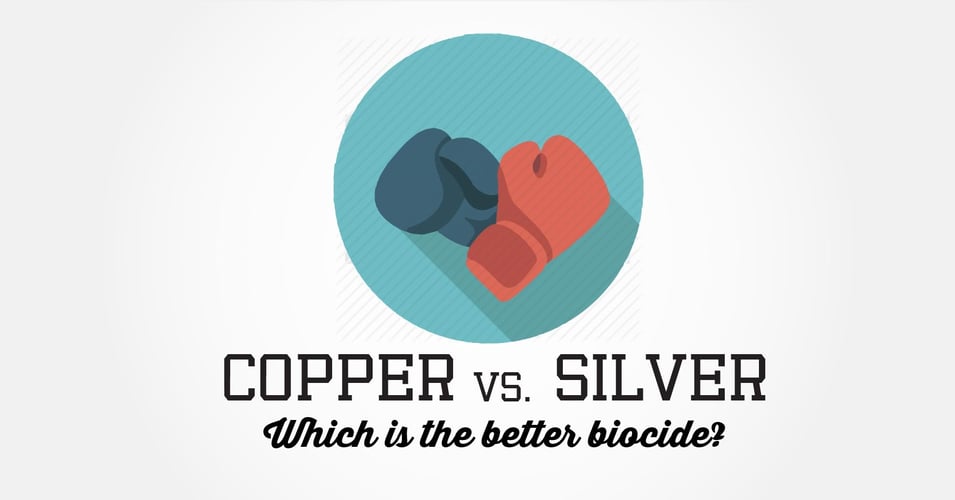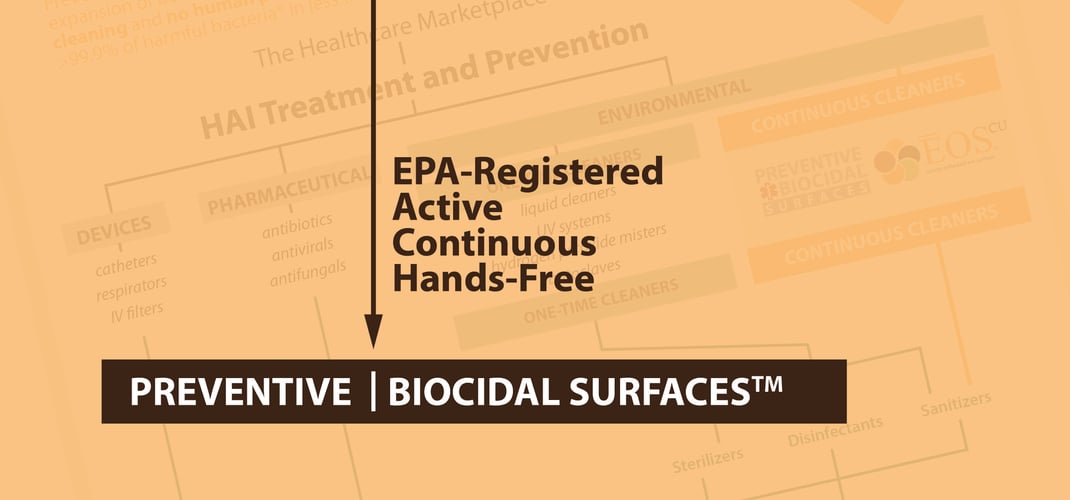Cut Throught the Copper Craze: How to Know What Works

During and since the COVID-19 pandemic, many products entered the market, hoping to capture customers who are desperate for ways to help them stay safe. In this emotional time, consumers may be confused about who to trust when it comes to claims made by products: Will this test really tell me if I'm COVID-19 positive? Will this mask really filter out virus particles? Will this air treatment really make a room safe for group assemblies? One of the patterns in these new products has been the use of copper, a known biocide that was elevated by a recent study by the NIH. In today's post, we will explore how you can cut through all the hype about copper and choose products that can actually back up their claims.
How do we know if any product can really keep us safe? 100 years ago, anyone could make any claim about any product (think of the era of "quacks" selling their medicines from a travelling caravan). Today, any product that wants to claim that it can protect the user by killing germs has to register those claims with the Environmental Protection Agency, or EPA. Registration is complete only when the EPA receives independent, third-party testing that proves effectiveness against the germs the product claims to kill. This is the way to make sure a product you are considering can actually back up their public health claims. After confirming an EPA registration number, which demonstrates it works in a lab, you also have to look at clinical trial results, to see if it works in the real world. Has the product been tested outside the lab? Was the research conducted independently and published in a peer-reviewed journal? Products that work demonstrate that efficacy through actual published research, where the research has been vetted by independent experts (rather than by a marketing team).
But what about all these copper products on the market - doesn't copper have EPA claims? Copper alloys (specific ones listed here) and EOSCU are the only copper products with EPA-registered public health claims. So if the product you are considering claims to be made from copper alloys, check to make sure it has an EPA registration number, as there is no central manufacturer making EPA-registered items out of copper alloys. If the product is made out of EOSCU, you can be assured that component does have EPA registration, since there is only one company making this material and you can confirm that EOScu is the actual material being used.
CLOTHING and MASKS: While there are no EPA-registered public health claims for fabric containing copper, including masks, there are medical textiles that have been part of clinical trials to examine ability to reduce contamination. Unfortunately, there is also no set standard for how much copper must be in the textile for it to be marketed as "copper cloth" such as the kind you might find in your neighborhood drug store. If there is a high amount of copper in the textiles, you can expect it to reduce some contamination over time. These masks will not kill virus particles as they pass through the cloth on the way to your mouth. So do you need a copper pillow, copper underwear, or copper socks? Probably not. In a hospital setting, however, medical textiles with copper do help reduce bacterial contamination.
HAND TOOLS: A few copper "hooks" or "grabbing tools" and even bracelets are currently on the market, made from copper alloys that do have EPA registrations. They will kill bacteria on their surface (not the one you are grabbing/touching or your hands) over time. They will not instantly clean themselves, so they can still transfer pathogens to your hands or the items in your pocket or bag. The best way to keep germs off your hands is to wash your hands regularly and use hand sanitizer when you're out and about.
PILLS: Taking copper supplements is not necessary nor is it helpful in avoiding COVID-19. Copper is an essential mineral, but you get all you need from your food in most cases. If you feel you need to take a supplement, always consult with your doctor. Pro tip: Dark chocolate is a great source of copper!
So when is copper a good idea for health and safety? For the general public, copper should be deployed in places with two characteristics: 1) Where lots of people come together (places like public transportation, airport luggage areas, and public bathrooms among others), and 2) Where significant contamination builds up between cleanings. Add a third characteristic - vulnerable people - and you can add hospitals, nursing homes, daycares, and other facilities that cater to sick or immunocompromised individuals. In fact, facilities such as these are starting to use copper-infused materials in their patient areas. In these high-use, high-touch, high-risk environments, the ability to actively and continuously kill biological contamination with a durable surface material has never been more important.
![EOScu Logo - Dark - Outlined [07182023]-01](https://blog.eoscu.com/hubfs/Eoscu_June2024/Images/EOScu%20Logo%20-%20Dark%20-%20Outlined%20%5B07182023%5D-01.svg)

![[infographic] How Copper Kills Bacteria Download and share!](https://no-cache.hubspot.com/cta/default/216314/interactive-178388176798.png)



